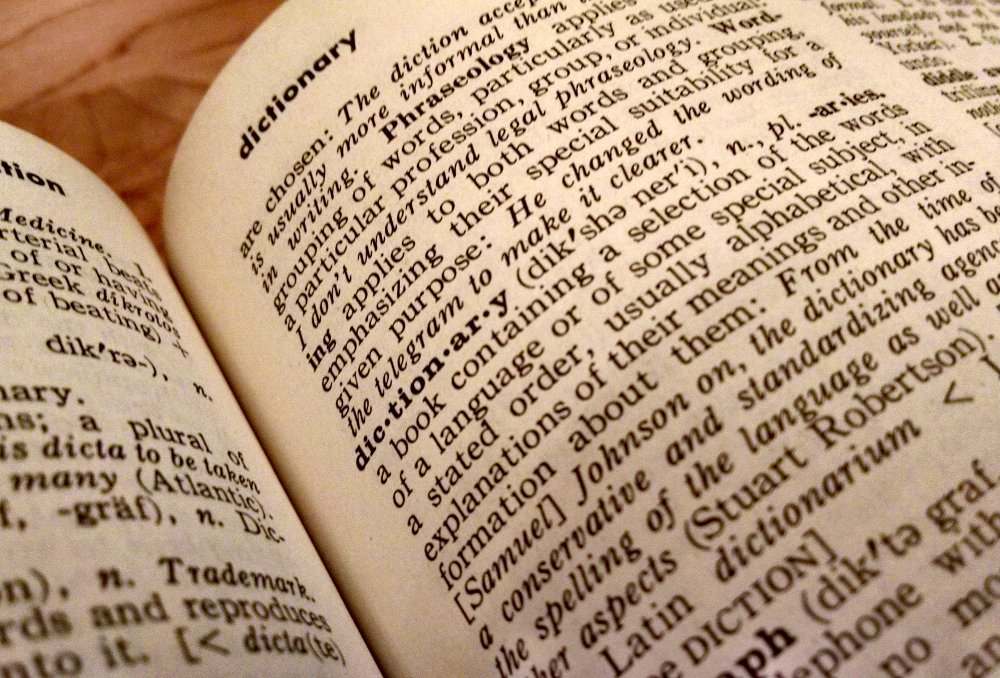
When I was a beginning healthcare student, I found medical books read a lot like at alphabet soup — until my medical vocabulary improved.
And what better way to improve vocab: Get the best medical dictionary and start looking words up!
That’s what I did when I went through radiography school. I’m sure it’s up for debate about what the “best” is, including what book and whether to use a hardback, e-book, or medical dictionary app.
I used the electronic edition of Mosby’s Medical Dictionary. I had no issues. Here’s my review of that book.
Find the best dictionary or read customer reviews on Amazon.
Hardback or e-book of the best medical dictionary?
Owning way too may books, I got the electronic version and thought it was the best online medical dictionary for my needs. Besides, a tablet or laptop is much easier for me to lug around rather than physical copies of books. Your situation and usage of the textbook may be different.
The e-version can only be accessed through Pageburst on Kno, which requires an Internet connection when using the e-book. That was never an issue for me because school and clinical sites all had a public Wi-Fi hotspots.
The book is massive at more than 1900 pages. Because there’s a lot of pages, the ability to use a computer’s search feature can speed up finding information quickly in an e-book — one of the reasons I opted for it.
The textbook features a standard “contents” section listing the “Editor’s Foreword,” “Consultants,” “Guide to the Dictionary,” “Pronunciation Key,” “Color Atlas of Human Anatomy,” “Vocabulary,” and “Illustration Credits.”
The meat of the this medical dictionary is the vocabulary section, but the anatomy atlas was beneficial for me.
It provides a quick, handy reference spot for detailed anatomy of every major system. For example, the skeleton system is listed, but also features the microscopic structure of bone. It does this with every system. Another example is the respiratory system. As expected, an overview of the lungs is presented, along with the physiology of gas-exchange structures in the lungs.
The anatomy atlas kept me from paging through an A&P textbook.
Vocab section aka dictionary proper
Besides the Mosby dictionary, I have a couple medical terminology textbooks (The Language of Medicine and Mastering Healthcare Terminology), which offer vocabulary and definitions. They don’t hold a candle to a good medical dictionary.
Whereas the terminology books provide a basic definition, the Mosby Medical dictionary tends to offer much more.
Example: The AIDS entry in the dictionary lists what it is but provides statistics about the number of people estimated living with the disease; along with an overview of symptoms, signs, and pathologies; possible interventions; and nursing considerations.
From what I noticed, it is only common pathologies that contain an “observations,” “interventions,” and “nursing considerations” section. This is still an information-heavy, dense book.
To illustrate that it’s not overkill on every entry, consider the prefix “di-” or “dis-“. It provides a dictionary entry, with three possible meanings and example words.
What I liked about this book was that it had select trade name drugs in it, with their chemical name.
Example: An entry for Coumadin listed that the drug was a “trademark for an anticoagulant (warfarin sodium).”
Not every drug know to humankind is listed. I looked up Plavix and found no entry, nor for its chemical name clopidogrel.
For select drugs, such as lidocaine hydrochloride, there were sections for “indications,” “contraindications,” and “adverse effects,” which I found helpful.
Click here to see inside the best medical dictionary and read customer reviews on Amazon.
Appendixes
I like appendixes because they feature high-yield information in a quick-to-read format. These are no different.
The appendixes feature sections on units of measurement, medical translation guide, info on sign language, normal reference values, nutrition, pharmacology and clinical conditions, range of motion, info on infection control, and diagnosis information.
Units of measurement: This section contained conversions for Avoirdupois and Apothecaries’ weights, which may be useful for medical and nursing students — as well as length conversions.
The body mass index table is a cool resource, along with a temperature conversion chart. Also, if you did not know how to read a 24-hour clock, there’s a primer there.
Language translations: A simple chart with English, Spanish, and French equivalents commonly used in healthcare is provided.
Although it could provide a study guide to help with your Spanish and French, I did not look through it until I wrote this medical dictionary review. The same holds true about the sign language appendix.
Reference values: This section is really cool. It provides a reference chart for values such as blood, serum, and plasma — in conventional and SI units — which may provide an excellent resource for nursing students and medical students. (There’s nothing worse than thumbing page after page in a textbooks trying to find values that you didn’t know or remember.)
The pharmacology and clinical calculations section is one that nursing students and med students, along with pharmacy students may like. It contains formulas and calculations for drugs, intravenous infusions, along with info on controlled substances.
Range of motion: This section I used when I first started school. I new nothing about supination, pronation, abduction, adduction, etc. and found the illustrations helpful.
Electronic version extras
I used the e-version, which gave me extras.
A few of the extras were really cool — like the anatomy tables and the color atlas, which provided extra practice in labeling. Most I did not use, though.
Here’s an overview of what I got with mine.
Anatomy tables
The “Anatomy Tables” features 64 pages devoted to listing arteries, bones, muscles, nerves, veins. The table is setup in an easy-to-read chart form.
The arteries section features the common name, terminologia anatomica term, origin, branches, and distribution.
The bones section lists the the common name, terminologia anatomica term, region, description, and articulations. While I was in x-ray school, the articulations information was an excellent reference section for me.
The muscles section features the common name, terminologia anatomica term, origin, insertion, innervation, and action.
The nerves section lists the common name, terminologia anatomica term, along with the origin, branches, and distribution.
The vein section features the common name, terminologia anatomica term, region, and where the vein receives blood and what it drains into.
Symbols, abbreviations, assessment guides, color atlas
There’s an abbreviations and symbols section, which I did not use much.
The assessment guides were beneficial as a new student. It gave me a basis for asking patients the right questions when getting a history and provided insight into asking other probing questions.
Because x-ray requires a very thorough understanding of anatomy, the color atlas section was an excellent testing tool for me and would be good for any A&P student.
It featured a graphic designed model of a piece of anatomy and required you to drag and drop the correct term to the location. For example, the pelvis is shown and you are required to label items such as the pelvic inlet, iliopectineal line, and sacral promontory.
The online version also has an audio glossary, med-term exercises, useful Spanish words and phrases sections — none of which I used.
Find the best medical dictionary for medical students in 2023 on Amazon.
Originally posted 2023-01-06 00:41:31.


